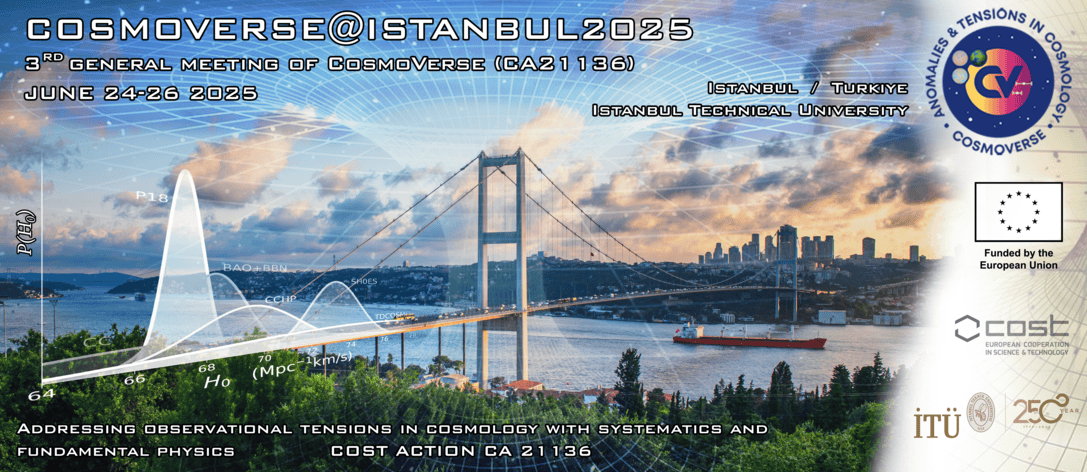Speaker
Description
Cosmic voids, the largest observable structures in the Universe and characterized by a scarcity of galaxies, impact the Cosmic Microwave Background (CMB) through gravitational lensing, leaving a negative imprint on the CMB convergence (κ) map. This imprint offers insights into matter distribution within voids and the growth of cosmic structures. Furthermore, voids produce secondary CMB anisotropies via the Integrated Sachs–Wolfe (ISW) effect, which manifest as colder regions in the CMB and serve as probes of the Universe’s accelerated expansion. Motivated by debates on the ISW effect’s strength from voids and its potential link to the CMB Cold Spot, we explore the CMB lensing signatures of voids to test the ΛCDM model using N-body simulations. For this reason, we cross-correlated Planck CMB κ maps with voids from DES Y3, covering approximately 4 200 square degrees, employing both the 2D void-finder and the new Voxel 3D void-finder. Applying optimal matched filtering based on MICE N-body simulations, we measured the lensing amplitude Aκ = 1.03 ± 0.22 (4.6σ) for Voxel and Aκ = 1.02 ± 0.17 (5.9σ) for 2D voids, aligning with ΛCDM predictions. Inverting the void-finding process to identify superclusters yielded Aκ = 0.87 ± 0.15 (5.9σ). Our analysis indicates good agreement with the consensus ΛCDM model, with no deficit or excess signals identified. We also show that Planck noise is the primary limitation, suggesting that future data from the Atacama Cosmology Telescope (ACT), Simons Observatory (SO), South Pole Telescope (SPT), and CMB-S4 will enhance sensitivity and enable more precise measurements. Upcoming observational programs such as the Roman Space Telescope, Euclid, and LSST are expected to provide data sets that will allow the statistics of cosmic voids to be exploited as a stringent probe of the ΛCDM and to deliver significantly tighter constraints on cosmological parameters.

